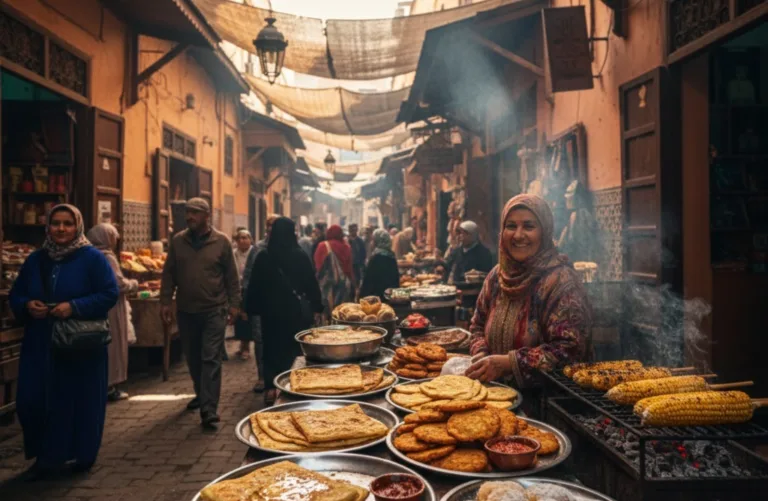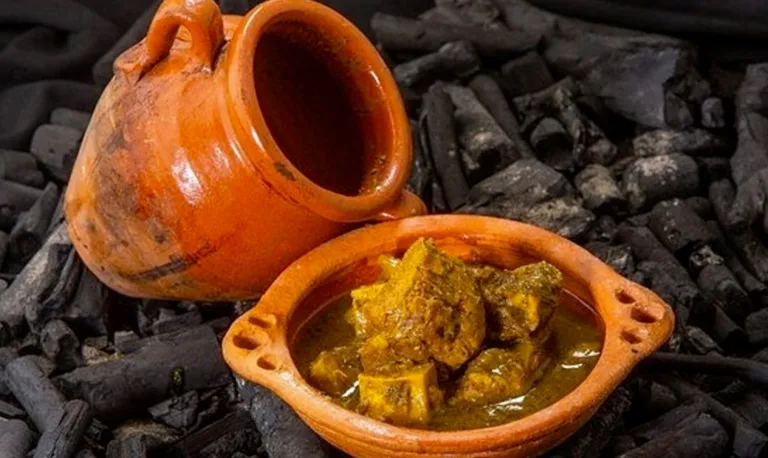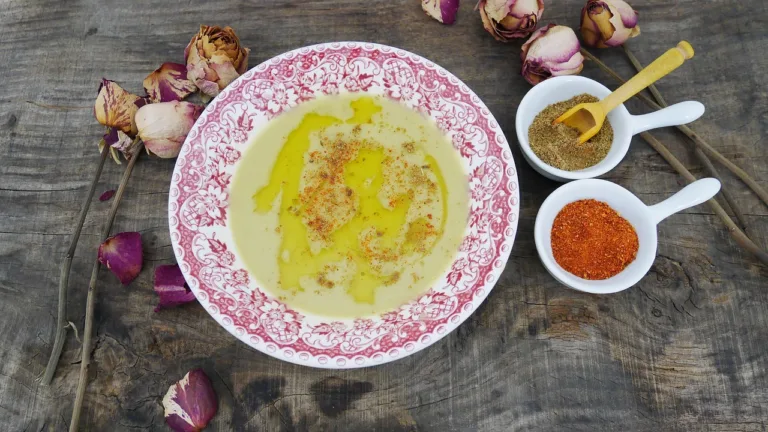Fez – One of the main trends that has captivated diet culture is Keto. At its core, the Keto diet means cutting sugars and starches and leaning into healthy fats and quality proteins.
In a Moroccan kitchen that translates to olive and argan oils, olives, almonds and walnuts, eggs, sardines and anchovies, lamb and chicken, plus plenty of low-starch vegetables like zucchini, eggplant, peppers, tomatoes in moderation, leafy greens and herbs.
Sorry bread and starch lovers, that means khobz, batbout, msemen, baghrir, couscous, rice, potatoes and most pastries are the main foods to skip.
Stocking your pantry and souk basket
Think of the market as your ally. Load up on seasonal greens, eggplants and peppers, a variety of olives and pickles, preserved lemons for brightness, good extra-virgin olive oil, and tins of Moroccan sardines.
Add fresh herbs, ras el hanout, cumin, paprika and harissa to keep flavors bold without carbs. For quick energy, keep almonds, walnuts and pumpkin seeds at home, and choose full-fat jben, raibi nature, and fermented lben without added sugar.
Breakfast without bread
Trade msemen and baghrir for omelets cooked in olive oil with khlii, peppers and tomatoes, or scrambled eggs with jben, olives and avocado.
A plate of tomatoes, cucumbers and herbs drizzled with olive oil works well alongside boiled eggs. Take your mint tea without sugar, or switch to unsweetened coffee with a splash of cream.
Your usual khobz utensil? That won’t work for Keto. So opt for a fork and knife instead.
Tagines and mains, reimagined
Most tagines are easy to make keto by skipping potatoes and prunes. Try lamb with zucchini and olives, chicken with preserved lemon and green olives, or kefta in spicy tomato butter with baked eggs (shakshouka style).
Grilled sardines, brochettes and charcoal chicken are perfect; just leave the bread and ask for extra salad. Zaalouk, taktouka and mechouia are flavorful vegetable sides when cooked in olive oil and served without bread.
Eating out and with family
In restaurants, order brochettes with mixed salads, fish of the day, or a potato-free tagine. At family tables, serve yourself generously from meat, fish and vegetables, and skip the khobz basket and couscous grains.
If you need a “base,” use shredded raw cabbage or cauliflower “rice” at home to carry sauces and juices.
Ramadan and celebrations
Harira and chebakia are tradition, but they’re not keto. For iftar, break the fast with water and a handful of olives or nuts, then have eggs, grilled fish or chicken and a hearty salad.
Make a light “harira-inspired” soup with bone broth, tomato, celery and herbs but without lentils or pasta. Dates are symbolic, yet very sugary, so keep to the smallest piece or skip and honor the ritual in other ways.
Sweets and drinks
Swap syrupy desserts for a few almonds, a slice of orange with cinnamon, or unsweetened raibi with crushed walnuts.
Choose water, sparkling water with lemon, unsweetened mint tea or coffee. Diet sodas are technically low-carb but best kept occasional.
Common pitfalls
Hidden sugars in juices, sweetened yogurt and bottled sauces can stall progress.
Dried fruits like raisins and prunes, honey glazes, and potato-heavy tagines add up fast.
If you’re new to keto, you may feel low on energy for a few days; hydration, salt, and magnesium-rich foods like almonds can help.
A simple three-day Moroccan keto sampler
Day one might be an omelet with khlii for breakfast, chicken-olive-lemon tagine with zaalouk for lunch, and grilled sardines with taktouka for dinner.
Day two could be boiled eggs with jben and olives in the morning, kefta with baked eggs at midday, and lamb chops with roasted zucchini at night.
Day three can start with avocado and tomato salad plus eggs, continue with charcoal chicken and mixed greens, and end with shrimp in chermoula butter over sautéed cauliflower “rice.”
















